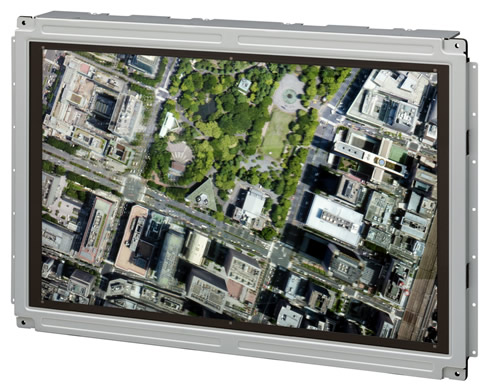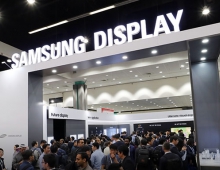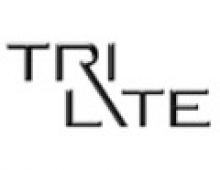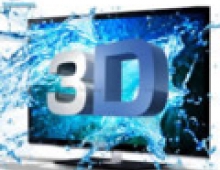
Toshiba Develops 21-inch Autostereoscopic High-definition Display
Toshiba Mobile Display Co., Ltd. has developed a 21-inch autostereoscopic high-definition display for use in 3D monitors that enables the user to enjoy 3D images without the need for special glasses.
To date most 3D products have used special glasses to separate a picture into two images: one for the left eye and the other for the right eye. But the market has strongly desired a more versatile and glasses-free approach that could be used anywhere. This new product employs an integral imaging system (a "light field" display) to reproduce a real object as a 3D image that can be viewed without glasses over a wide range of viewing angles. Therefore, the display is suitable for 3D monitors used for advertisements and entertainment appliances.

The integral imaging system offers a significant reduction in eye fatigue during long periods of viewing, and features a multi-parallax design that enables motion parallax, which cannot be achieved by systems using glasses. Generally in parallax systems, in order to present a 3D image it requires the data to be viewed from at least two directions -- one for the left eye and the other for the right eye -- which is called a 2-parallax 3D display. Toshiba's new product creates image data viewed from nine directions. The multi-parallax approach results in images that change depending on the viewer?s position. In addition, the viewing angle is wide, and the resulting stereoscopic image is natural and smooth, the company claims.
In some previous integral imaging implementations, there have been issues raised relating to the loss of effective image resolution. In previous implementations, if the number of pixels in the display is kept constant and not increased, then the multi-parallax approach will reduce the effective resolution of the 3D display in an inverse proportion to the number of parallax positions. Toshiba claims that it has addressed this problem by applying LTPS (low-temperature poly-silicon) technology to develop an ultra-high-definition LCD module for this newly-introduced high-definition and large-screen 3D display.
This 21-inch auto-stereoscopic high-definition display adopts a lens sheet to control reduction in surface luminance intensity, resulting in brightness comparable to standard 2D displays. The power consumption of the display is relatively low.
Furthermore, the display can be used in a vertical or horizontal position. When used in the vertical position, the user faces the upright screen from the front as a person would usually use a 2D monitor. However, when used in the horizontal position, the user overlooks the stereoscopic image formed by the display lying face-up, as one would overlook a relief model. Compared with the front view, the 3D images seen face-up from the bird?s eye view are more stereoscopic and realistic.
Toshiba America Electronics Components, Inc. will showcase this display at SID 2010 International Symposium, Seminar, and Exhibition, from May 25 to May 27, 2010, in Seattle, WA, USA.
Specifications
3-D method: Integral imaging system with 9-parallax design
Screen size (diagonal): 21-inch/53.3 cm
Number of 3D pixels: 1,280 (horizontal) x 800 (vertical) / WXGA
3D viewing zone (typical): ±15 degrees (horizontal)
Surface intensity (typical): 480 cd/m2

The integral imaging system offers a significant reduction in eye fatigue during long periods of viewing, and features a multi-parallax design that enables motion parallax, which cannot be achieved by systems using glasses. Generally in parallax systems, in order to present a 3D image it requires the data to be viewed from at least two directions -- one for the left eye and the other for the right eye -- which is called a 2-parallax 3D display. Toshiba's new product creates image data viewed from nine directions. The multi-parallax approach results in images that change depending on the viewer?s position. In addition, the viewing angle is wide, and the resulting stereoscopic image is natural and smooth, the company claims.
In some previous integral imaging implementations, there have been issues raised relating to the loss of effective image resolution. In previous implementations, if the number of pixels in the display is kept constant and not increased, then the multi-parallax approach will reduce the effective resolution of the 3D display in an inverse proportion to the number of parallax positions. Toshiba claims that it has addressed this problem by applying LTPS (low-temperature poly-silicon) technology to develop an ultra-high-definition LCD module for this newly-introduced high-definition and large-screen 3D display.
This 21-inch auto-stereoscopic high-definition display adopts a lens sheet to control reduction in surface luminance intensity, resulting in brightness comparable to standard 2D displays. The power consumption of the display is relatively low.
Furthermore, the display can be used in a vertical or horizontal position. When used in the vertical position, the user faces the upright screen from the front as a person would usually use a 2D monitor. However, when used in the horizontal position, the user overlooks the stereoscopic image formed by the display lying face-up, as one would overlook a relief model. Compared with the front view, the 3D images seen face-up from the bird?s eye view are more stereoscopic and realistic.
Toshiba America Electronics Components, Inc. will showcase this display at SID 2010 International Symposium, Seminar, and Exhibition, from May 25 to May 27, 2010, in Seattle, WA, USA.
Specifications
3-D method: Integral imaging system with 9-parallax design
Screen size (diagonal): 21-inch/53.3 cm
Number of 3D pixels: 1,280 (horizontal) x 800 (vertical) / WXGA
3D viewing zone (typical): ±15 degrees (horizontal)
Surface intensity (typical): 480 cd/m2





















